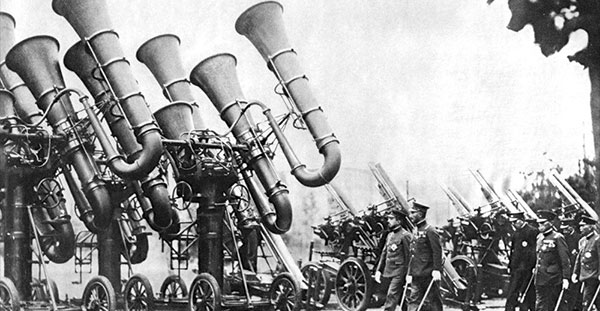Aerial warfare became increasingly important during World War I. Zeppelin airships conducted bombing raids on England. Aircraft were employed as bombers by both sides. If only the approach of an enemy aircraft was detected effectively, they could defend themselves better.
This led to both sides to develop listening devices to detect enemies at a distance. Some were small and portable which an operator could listen using stethoscope-style headphones. Others developed large and elaborate detectors with their efficiency varying widely. Most notable among them were the Japanese acoustic locators nicknamed “War tubas.” Their use continued until the early years of World War II.
Three Japanese acoustic locators, colloquially known as “war tubas,” mounted on four-wheel carriages, being inspected by Japanese Emperor Shōwa (1930s)
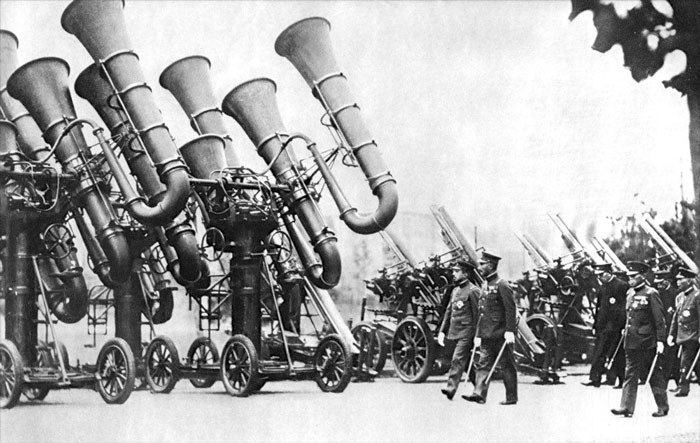
IMAGE: PUBLIC DOMAIN
Japanese soldiers demonstrate the use of a “war tuba” (1932)
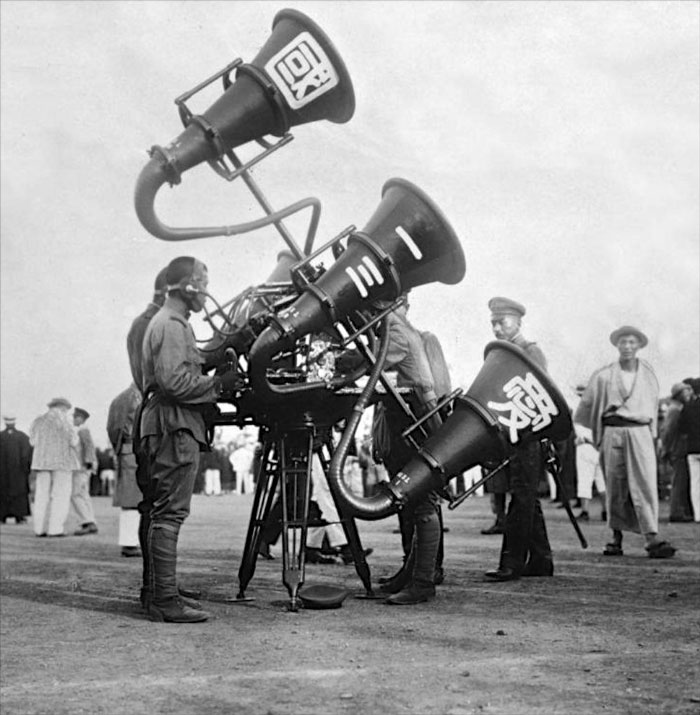
IMAGE: PUBLIC DOMAIN
Bolling Air Field horn amplifiers (1921)
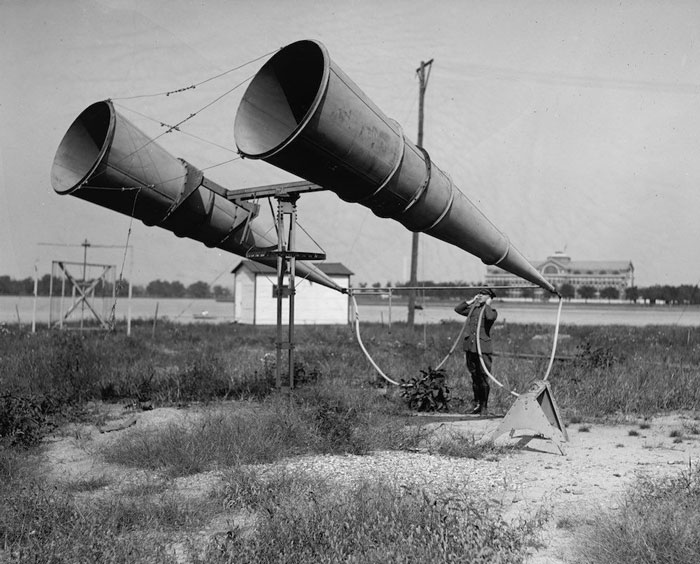
IMAGE: BUYENLARGE/GETTY IMAGES
A sound locator in operating position (1930s)
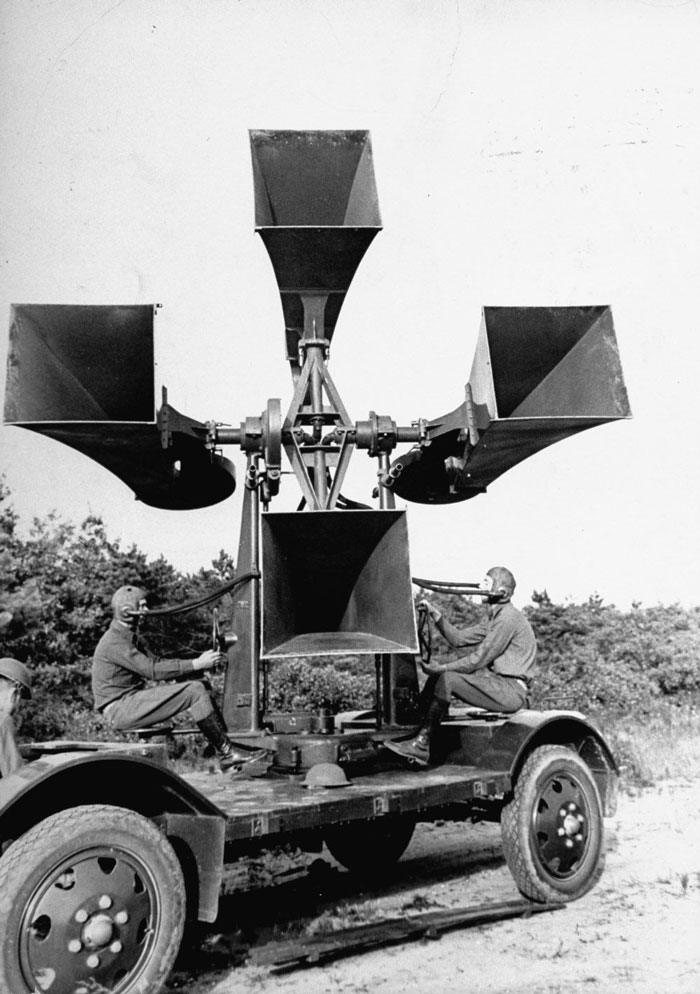
IMAGE: CARL MYDANS/THE LIFE PICTURE COLLECTION/GETTY IMAGES
An early radar system in operation at an aerodrome in the south of England (1930s)
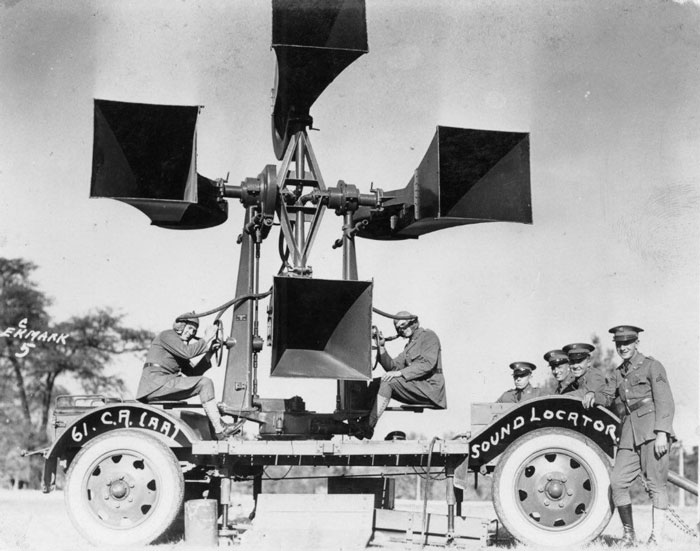
IMAGE: HULTON ARCHIVE/GETTY IMAGES
A pair of enormous amplifiers used by the U.S. Naval Air Service for locating and contacting aeroplanes by day and night (c. 1925)
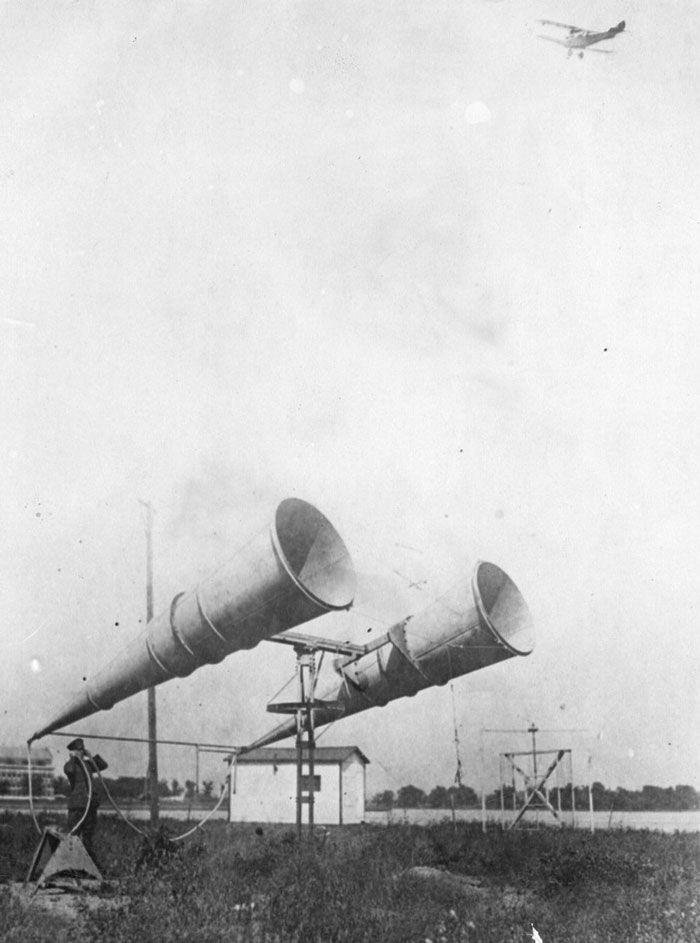
IMAGE: HULTON ARCHIVE/GETTY IMAGES
An early radar system in operation at an aerodrome in the south of England (c. 1930)
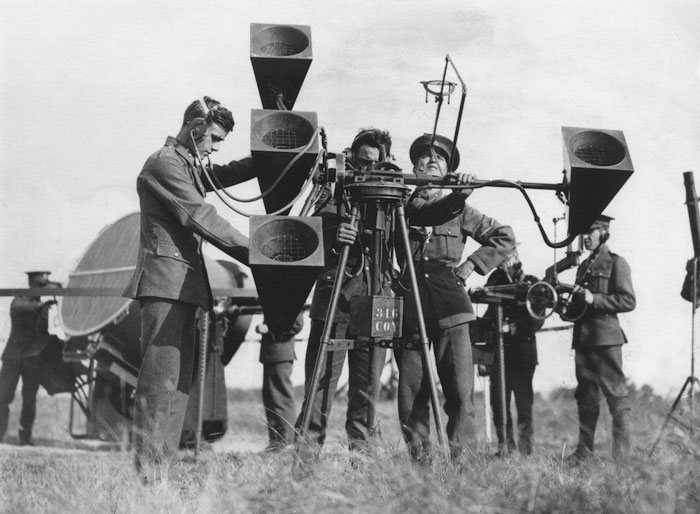
IMAGE: HULTON ARCHIVE/GETTY IMAGES

